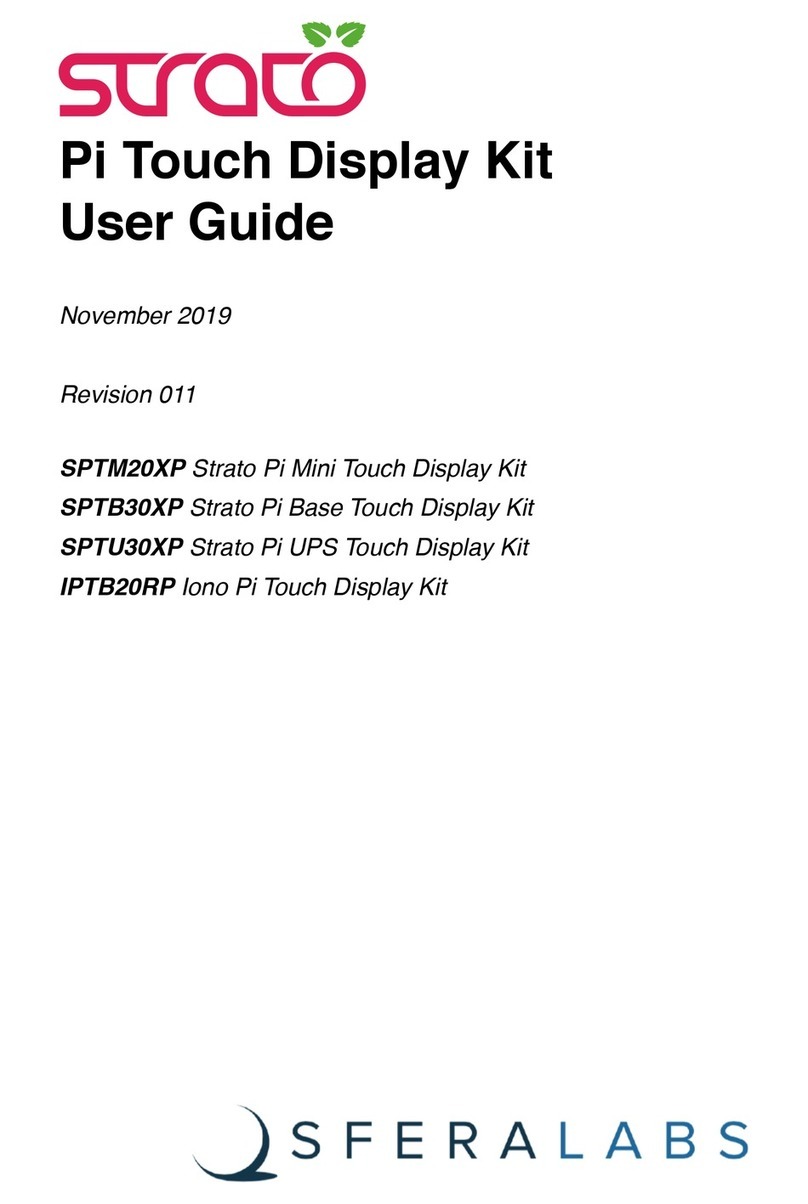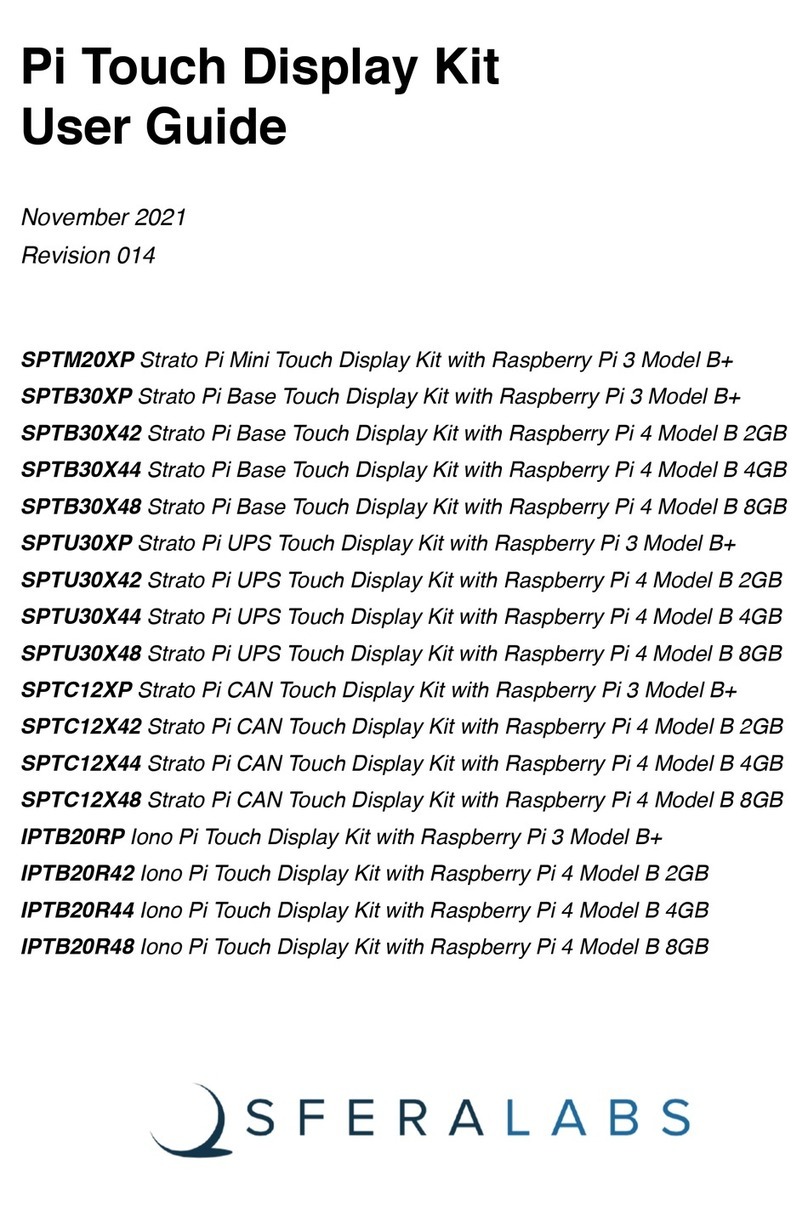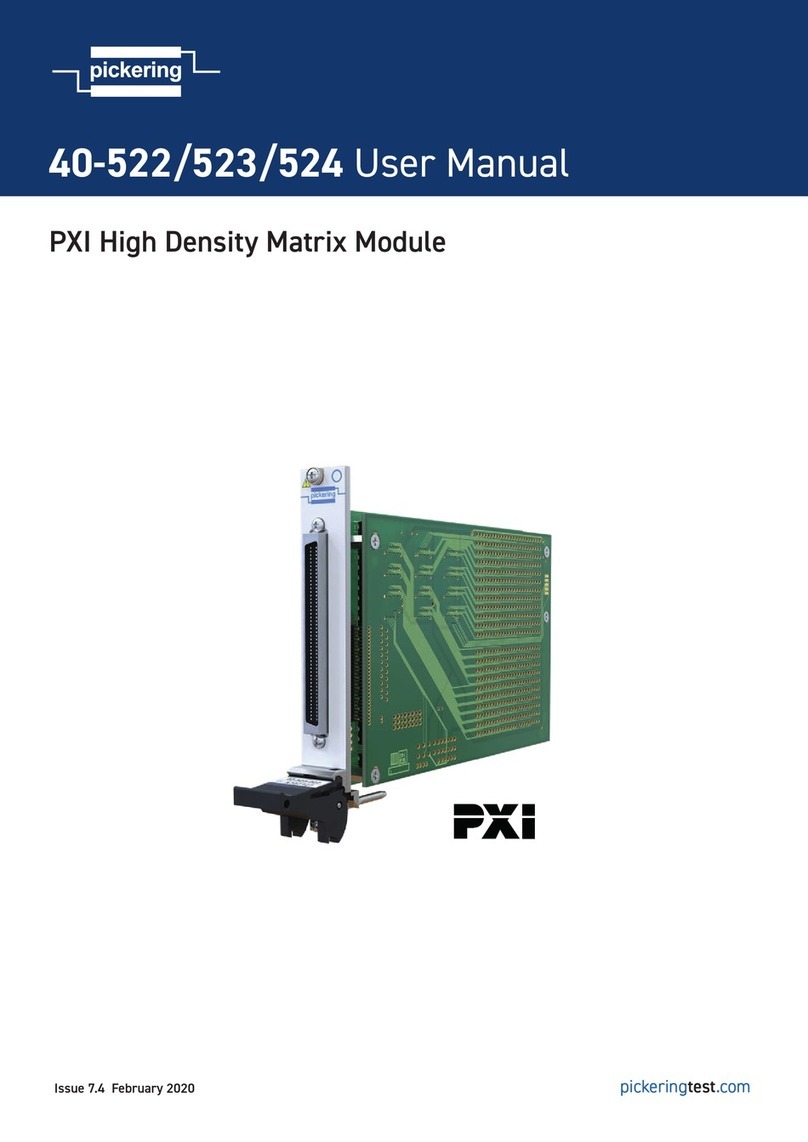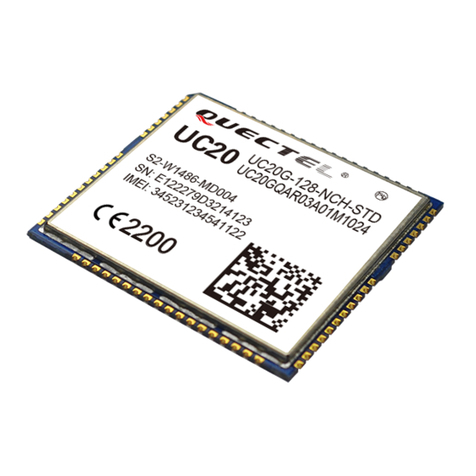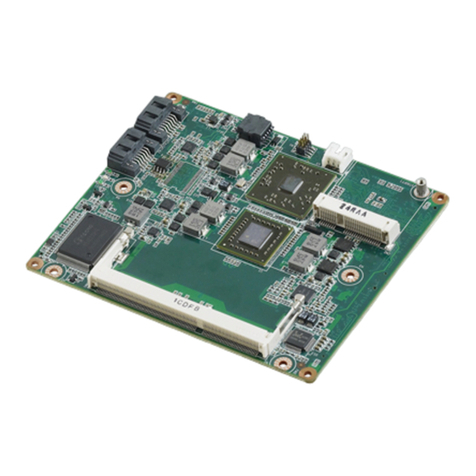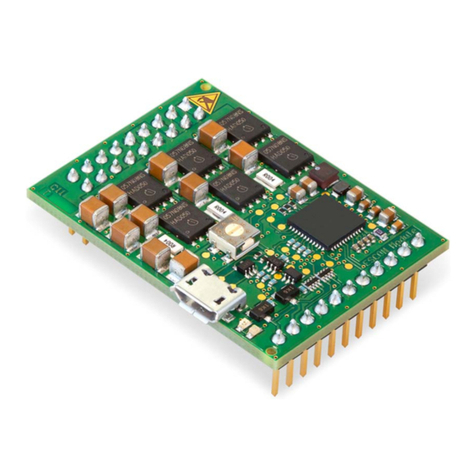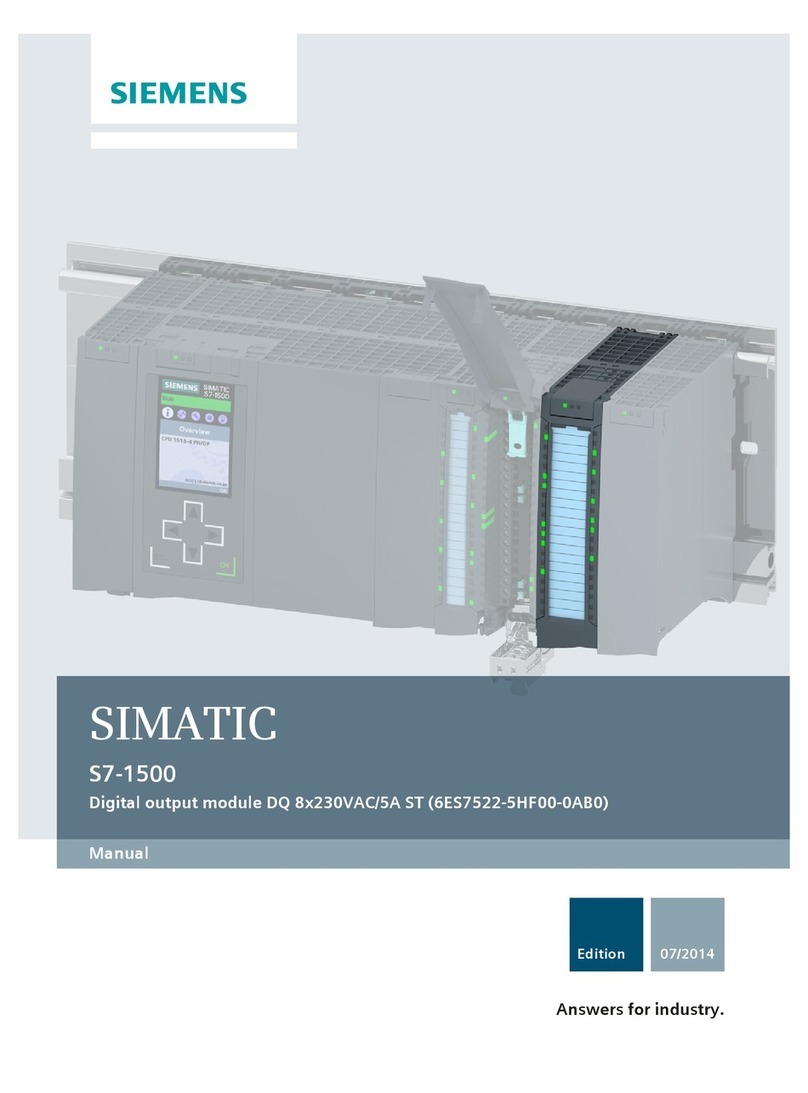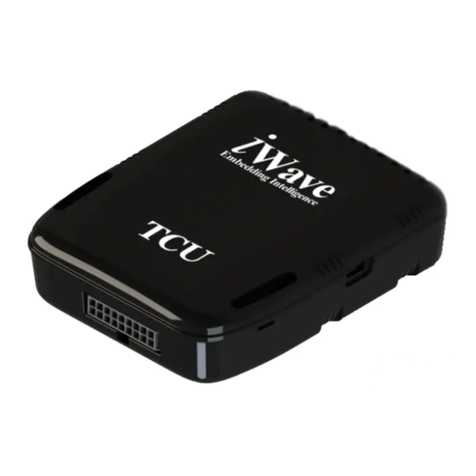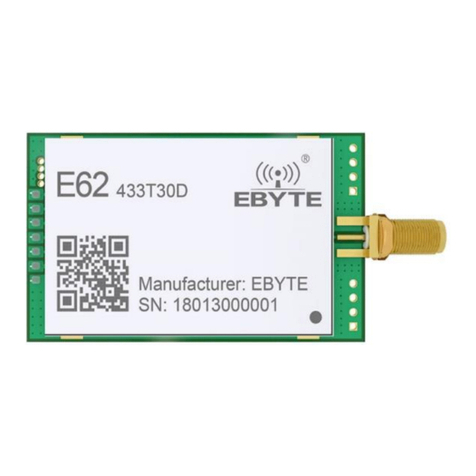Sferalabs Exo Sense Pi User manual

Exo Sense Pi User Guide
May 2021
Revision 002
ESCB10X Exo Sense Pi
ESCB10E Exo Sense Pi with earthquake sensor
ESCB10X4101008 Exo Sense Pi with CM4 Wireless, 1GB RAM, 8GB eMMC
ESCB10X4102016 Exo Sense Pi with CM4 Wireless, 2GB RAM, 16GB eMMC
ESCB10X4102000 Exo Sense Pi with CM4 Wireless, 2GB RAM, Lite
!

Safety information 4
Qualified personnel 4
Hazard levels 4
Safety instructions 5
General safety instructions 5
Battery 5
Device identification 6
Introduction 7
Features 8
Hardware setup 9
Opening the case 9
Closing the case 10
Raspberry Pi Compute Module 4 board installation 10
Replacing the RTC backup battery 11
Connections 12
Power supply 13
Software installation and configuration 14
Raspberry Pi OS Kernel module 14
Calibration 15
Raspberry Pi OS Real Time Clock installation 15
Features details 17
Temperature, humidity and air quality sensors 17
Light sensor 18
Microphone 18
PIR motion sensor 19
TTLx/DIx: TTL input/output or generic digital inputs 19
DO1: Open collector output 21
Buzzer 21
LEDs 21
RS-485 serial port 21
Real Time Clock 22
ATECC608A secure element 23
Earthquake sensor module (optional) 23
Dedicated GPIO pins 24
I²C bus addresses 24
Block diagram 25
1
Exo Sense Pi User Guide

Board layout 26
Technical specifications 27
Dimensions 29
Disposal 30
Installation and use restrictions 30
Standards and regulations 30
Safety instructions 30
Set-up 30
Conformity Information 31
EU 31
USA 31
CANADA 32
RCM AUSTRALIA / NEW ZEALAND 32
Compliance information for Raspberry Pi CM4 32
EU 32
USA 32
CANADA 32
2
Exo Sense Pi User Guide

Be sure to always remove the power supply before installing or
removing the CM4 board inside Exo Sense Pi.
Exo Sense Pi must be operated with the plastic case installed.
Follow all applicable electrical safety standards, guidelines,
specifications and regulations for installation, wiring and operations of
Exo Sense Pi.
Carefully and fully read this Exo Sense Pi user guide before installation.
Exo Sense Pi is not authorised for use in safety-critical applications where a failure of the
product would reasonably be expected to cause personal injury or death. Safety-critical
applications include, without limitation, life support devices and systems, equipment or
systems for the operation of nuclear facilities and weapons systems. Exo Sense Pi is
neither designed nor intended for use in military or aerospace applications or
environments and for automotive applications or environment. Customer acknowledges
and agrees that any such use of Exo Sense Pi is solely at Customer's risk, and that
Customer is solely responsible for compliance with all legal and regulatory requirements in
connection with such use.
Sfera Labs S.r.l. may make changes to specifications and product descriptions at any time,
without notice. The product information on the web site or materials is subject to change
without notice.
Please download and read the Sfera Labs Terms and Conditions document available at:
http://www.sferalabs.cc
Exo and Sfera Labs are trademarks of Sfera Labs S.r.l. Other brands and names may be
claimed as the property of others.
#
Copyright © 2021 Sfera Labs S.r.l. All rights reserved.!
3
Exo Sense Pi User Guide

Safety information
Carefully and fully read this user guide before installation and retain it for future reference.
Qualified personnel
The product described in this manual must be operated only by personnel qualified for the
specific task and installation environment, in accordance with all relevant documentation
and safety instructions. A qualified person should be capable of fully identifying all
installation and operation risks and avoid potential hazards when working with this product.
Hazard levels
This manual contains information you must observe to ensure your personal safety and
prevent damage to property. Safety information in this manual are highlighted by the safety
symbols below, graded according to the degree of danger.
Indicates a hazardous situation which, if not avoided, will result in death or serious
personal injury.
Indicates a hazardous situation which, if not avoided, may result in death or serious
personal injury.
Indicates a hazardous situation which, if not avoided, can result in minor or moderate
personal injury.
Indicates a situation which, if not avoided, can result in damage of property.
DANGER
WARNING
CAUTION
NOTICE
4
Exo Sense Pi User Guide

Safety instructions
General safety instructions
Protect the unit against moisture, dirt and any kind of damage during transport, storage
and operation. Do not operate the unit outside the specified technical data.
Never open the housing. Do not obstruct cooling of the unit. Keep out of the reach of
children.
Life threatening voltages are present within and around an open control cabinet.
When installing this product in a control cabinet or any other areas where dangerous
voltages are present, always switch off the power supply to the cabinet or equipment.
Risk of fire if not installed and operated properly.
Follow all applicable electrical safety standards, guidelines, specifications and regulations
for installation, wiring and operations of this product.
Ensure that the product is properly installed and ventilated to prevent overheat.
The connection of expansion devices to this product may damage the product and other
connected systems, and may violate safety rules and regulations regarding radio
interference and electromagnetic compatibility.
Use only appropriate tools when installing this product. Using excessive force with tools
may damage the product, alter its characteristics or degrade its safety.
Battery
This product uses a small lithium non-rechargeable battery to power its internal real time
clock (RTC).
WARNING
WARNING
NOTICE
5
Exo Sense Pi User Guide

Improper handling of lithium batteries can result in an explosion of the batteries and/or
release of harmful substances.
Worn-out or defective batteries can compromise the function of this product.
KEEP OUT OF REACH OF CHILDREN. Swallowing may lead to serious injury or death in
as little as 2 hours due to chemical burns and potential perforation of the esophagus.
Immediately see doctor.
Replace the RTC lithium battery before it is completely discharged. Replace the battery
every 5 years even if the battery is still working properly. The lithium battery must be
replaced only with an identical CR1025 Lithium / Manganese Dioxide (Li/MnO2) battery.
Do not throw lithium batteries into fire, do not solder on the cell body, do not recharge, do
not open, do not short-circuit, do not reverse polarity, do not heat above 100°C and protect
from direct sunlight, moisture and condensation.
Dispose of used batteries according to local regulations and the battery manufacturer's
instructions.
Device identification
The device can be identified with the information provided in the rating and identification
plate, permanently attached to the internal side of the front cover case.
EXAMPLE RATING AND IDENTIFICATION PLATE
WARNING
6
Exo Sense Pi User Guide

Introduction
Exo Sense Pi is an extremely versatile indoor environment sensor. It combines the
computing power and wireless capabilities of the Raspberry Pi Compute Module 4 with
several environmental sensors and input/output lines.
Exo Sense Pi embeds temperature, humidity, air quality, light and PIR-based motion
detection sensors, as well as a microphone for ambient noise measurements and audio
recording. Two digital input/output lines and an open-collector output line are available on
the terminal block. A real time clock module with battery back-up is also standard. It can
optionally have a factory-installed earthquake sensor module.
An ESD-protected RS-485 bus is available for wired serial communication using the
industry standard Modbus protocol or any other half-duplex serial protocol.
You can use your preferred Compute Module board. Both the Lite versions (without
eMMC) and all versions with embedded eMMC are supported.
7
Exo Sense Pi User Guide

Features
The Exo Sense Pi key features are:
✓10÷28Vdc power supply, with surge and reverse polarity protection, and 1.1A resettable
fuse
✓compatible with all versions of Raspberry Pi Compute Module 4
✓Sensirion SHT40 temperature and humidity sensor
✓Sensirion SGP40 air quality (Volatile Organic Compounds) sensor
✓Texas Instruments OPT3001 digital ambient light sensor (ALS) with high-precision
human-eye response
✓Panasonic EKMC PIR motion sensor
✓TDK ICS-43432 digital I²S microphone for audio recording and environment noise
detection
✓two digital inputs for potential-free contacts or TTL level input/output with 1-Wire, I²C
and Wiegand support
✓one open collector output with a maximum output current of 100mA, protected against
over-current and short circuits
✓standard RS-485 interface to the Compute Module UART serial lines, with electrostatic
discharge (ESD) protection
✓real time clock with replaceable CR1025 Lithium / Manganese Dioxide back-up battery
✓Microchip ATECC608 secure element chip
✓GPIO/PWM-controlled piezoelectric buzzer, for acoustic feedback
✓GPIO-controlled LED
✓hidden micro USB port with Micro-AB receptacle (to flash the Raspberry Pi Compute
Module eMMC), can be accessed opening the case
✓hidden microSD slot to install the external flash memory of the Raspberry Pi Compute
Module 4 Lite, can be accessed opening the case
✓Optional external 10/100 Mbps Ethernet interface with PoE support (IEEE 802.3at
Type$1)
✓Optional earthquake sensor module
✓80x80 mm wall mount ABS case with fast snap-in terminal block for easier installation.
8
Exo Sense Pi User Guide

Hardware setup
For the initial setup, the plastic wall mount case must be removed to access the circuit
board and internal connectors.
The case also needs to be opened to connect insert the µSD card or plug the microUSB
connector, and if the factory configuration of the internal jumpers for the RS-485
termination resistors or digital input configuration must be changed.
Before opening the Exo Sense Pi case, disconnect all power sources and any connection
to external devices.
Opening the case
Follow these steps, in the exact order, to open the case:
1. Use a small flat screwdriver to gently separate the front plastic cover from the wall
mount back
2. The circuit board should remain attached to the front plastic cover; pay attention not to
drop the circuit board, as it could be not firmly attached
3. With a small flat screwdriver gently separate the circuit board from the front cover. In
some cases the circuit board could separate from the front case and remain connected
to the terminal block.
SEPARATE THE FRONT PLASTIC COVER FROM THE WALL MOUNT BACK
NOTICE
9
Exo Sense Pi User Guide

Closing the case
4. Replace the circuit board assembly inside the front cover; respect the orientation, with
the light sensor aligned to the optical guide
5. Align the front cover and circuit board with the wall mount back, so that the connection
pins on the circuit board match the terminal block receptacles on the wall mount back
6. Gently snap in the front plastic cover to the wall mount back.
THE PCB HOLDERS OF THE FRONT COVER
ALIGN THE CONNECTION PINS WITH THE TERMINAL BLOCK
Raspberry Pi Compute Module 4 board installation
To install your own Raspberry Pi Compute Module 4 board in Exo Sense Pi, or replace a
pre-installed board, only a screwdriver is required.
Align the screw holes and connectors of the Compute Module with the Exo Sense Pi circuit
board and gently snap in the board. Two screws secure the Compute Module to the Exo
Sense Pi board.
10
Exo Sense Pi User Guide

Both the Compute Module and the Exo Sense Pi circuit board will likely be damaged if the
connectors are not correctly aligned.
COMPUTE MODULE 4 BOARD INSTALLATION
Static electricity can damage the components in your system. To protect your system's
components from static damage during the installation process, touch any of the unpainted
metal surfaces on your computer's frame or wear an ESD wrist strap before handling
internal components. Either method will safely discharge static electricity that's naturally
present in your body.
When handling the Exo Sense Pi circuit board or the Compute Module, be sure to hold it
along the side edges using your thumb and index finger. Avoid touching the components
and pin connectors as damage can occur.
Replacing the RTC backup battery
The Exo Sense Pi RTC uses a CR1025 Lithium / Manganese Dioxide (Li/MnO2) battery.
NOTICE
NOTICE
WARNING
11
Exo Sense Pi User Guide

Improper handling of lithium batteries can result in an explosion of the batteries and/or
release of harmful substances.
Worn-out or defective batteries can compromise the function of this product.
KEEP OUT OF REACH OF CHILDREN. Swallowing may lead to serious injury or death in
as little as 2 hours due to chemical burns and potential perforation of the esophagus.
Immediately see doctor.
Replace the RTC lithium battery before it is completely discharged. Replace the battery
every 5 years even if the battery is still working properly. The lithium battery must be
replaced only with an identical CR1025 Lithium / Manganese Dioxide (Li/MnO2) battery.
Do not throw lithium batteries into fire, do not solder on the cell body, do not recharge, do
not open, do not short-circuit, do not reverse polarity, do not heat above 100°C and protect
from direct sunlight, moisture and condensation.
Dispose of used batteries according to local regulations and the battery manufacturer's
instructions.
The battery is not accessible from the outside. You should first remove the case top cover
to gain access to the Exo Sense Pi circuit boards.
Before opening the Exo Sense Pi case, disconnect all power sources and any connection
to external devices.
Use a non-conductive pin or small tool to help extract the battery from its holder. Insert the
new battery with a gentle push. You don't need tools to insert the battery. The battery is
held into place by a spring contact.
Be sure to insert the battery so that the positive (+) terminal of the battery is in contact with
the outer body of the battery holder, and the negative (-) terminal is in contact with the
contact pad of the circuit board, as shown in the photo below.
Reversing the battery polarity may damage the product.
The real time clock will reset its time immediately when the RTC backup battery is
disconnected.
Connections
Exo Sense Pi has a 7 position terminal block attached to the back of the wall mount case.
This terminal block is connected to a 7 pin header soldered to the circuit board.
The maximum conductor cross section is 2.5 mm2(14 AWG). Recommended stripping
length is 7 mm. Screw thread is M3. Never exceed 0.6 Nm torque when tightening the
screws.
NOTICE
12
Exo Sense Pi User Guide

CONNECTION EXAMPLE
Ensure that all cables entering the Exo Sense Pi case are isolated to avoid electrical
contact with the back of the printed circuit board or other conductive elements.
The cables should be routed out of the case through the circular hole at the center of the
case back frame.
Ensure the cables cannot be punctured when the case is closed and that they don't
exercise mechanical pressure on the printed circuit board.
Power supply
Exo Sense Pi can be powered with DC voltage only:
✓DC: nominal voltage in the range 10V to 28V (min=9V, max=30V)
Respect the correct polarity shown in the schematic diagram (+ -). The power supply
circuit implements reverse polarity protection using an auto resetting fuse and surge
protection up to ±1000V/2ohms 1.2/50μs.
WARNING
13
Exo Sense Pi User Guide

Software installation and configuration
All features of Exo Sense Pi can be used with any operating system, programming
language or framework compatible with Raspberry Pi.
The following sections describe how to install utility drivers for the Raspberry Pi OS
(formerly Raspbian).
If you are using other operating systems or need not to use the provided utilities, you can
access all the functionalities of Exo Sense Pi via dedicated GPIO pins and the I2C bus.
All the features directly controlled via GPIO, such as digital I/O, can be accessed using
any of the standard methods provided by the operating system or any available library for
your programming language or framework of choice.
Make sure the GPIO pins are correctly configured as inputs or outputs, depending on the
function and no pull-up/pull-down is enabled.
All sensors and other I²C devices are available on the primary I²C bus and directly
accessible through standard methods.
Refer to the next chapter for details about each feature.
Raspberry Pi OS Kernel module
The Exo Sense Pi Kernel module can be used to easily access all of Exo Sense Pi
features via a sysfs file system.
Refer to the instructions below to download and install the module or go to the following
link for updated instructions and further details:
https://github.com/sfera-labs/exo-sense-pi-kernel-module
Download and install:
$ sudo apt install git raspberrypi-kernel-headers
$ git clone --depth 1 https://github.com/sfera-labs/exo-sense-pi-kernel-module
$ cd exo-sense-pi-kernel-module
$ make
$ sudo make install
$ dtc -@ -Hepapr -I dts -O dtb -o exosensepi.dtbo exosensepi.dts
$ sudo cp exosensepi.dtbo /boot/overlays/
Add$the following line to$/boot/config.txt:
dtoverlay=exosensepi
Optionally, to use the$/sys/$files not as super user, create a new group "exosensepi" and
set it as the module owner group by adding an udev rule:
$ sudo groupadd exosensepi
$ sudo cp 99-exosensepi.rules /etc/udev/rules.d/
and add your user to the group, e.g., for user "pi":
$ sudo usermod -a -G exosensepi pi
Reboot:
$ sudo reboot
14
Exo Sense Pi User Guide

You will find all the available devices under the directory$/sys/class/exosensepi/ and you
will be able to control all the exposed functionalities by simply reading/writing the
corresponding files from your application or any tool or framework that supports file
access.
Calibration
Exo Sense Pi produces internal heat that influences its sensors readings. To compensate,
the kernel module applies a transformation to the values reported by the temperature
sensor based on calibration parameters computed by the procedure described below.#
The compensated temperature values are, in turn, used to adjust humidity and VOC
values.
Install the calibration script and service:
$ sudo cp exosensepi-calibrate.service /lib/systemd/system/
$ sudo cp exosensepi-calibrate.py /usr/local/bin/
$ sudo chmod +x /usr/local/bin/exosensepi-calibrate.py
To perform the calibration procedure, enable the$exosensepi-calibrate$service:
$ sudo systemctl enable exosensepi-calibrate
Shut down the Pi and remove power. Wait for the module to cool off (about 1 hour) and
power it back on.
The calibration procedure will start automatically. You will hear a short beep when it starts
and the blue LED will blink while running.
The process should finish in about 30 minutes, but could run for up to 80 minutes. When it
completes you will hear 3 short beeps and the blue LED will be steady on. The calibration
service gets automatically disabled after completion so it won't run again on the next boot.
You will find the computed calibration parameters$temp_calib_m$and$temp_calib_b$set in #
/etc/modprobe.d/exosensepi.conf:
options exosensepi temp_calib_m=<M> temp_calib_b=<B>
Reboot Exo Sense Pi to have the module reload and apply the calibration parameters.
Raspberry Pi OS Real Time Clock installation
The RTC is based on the Microchip MCP79410 which is natively supported by the
Raspberry Pi OS.
You can use the available "i2c-rtc,mcp7941x" dtoverlay by adding it in /boot/config.txt.
Alternatively, use the following steps to install a service that, at boot, enables and
calibrates the RTC and aligns the system clock.
Enable the I2C bus using the “raspi-config” configuration utility:
$ sudo raspi-config
Go to "Interfacing options" > "I2C" and select "Yes".
Install the “i2c-tools” package:
$ sudo apt install i2c-tools
You may want to remove the "fake-hwclock" to avoid conflicts:
15
Exo Sense Pi User Guide

$ sudo apt autoremove --purge fake-hwclock
Download and run the installation script:
$ wget https://sferalabs.cc/files/mcp79410/rtc-install
$ chmod 755 rtc-install
$ sudo ./rtc-install
After completion, delete the installation script and reboot:
$ rm rtc-install
$ sudo reboot
On the first usage or after replacing the RTC backup battery, set the correct date/time of
the RTC as follows.
If you are connected to the Internet and the system was able to reach an NTP (Network
Time Protocol) server, you should see the current date and time using the “date”
command:
$ date
Thu Sep 10 15:39:31 BST 2020
To set the RTC time to the current system time:
$ sudo hwclock -w
To check the date and time stored in the hardware RTC:
$ sudo hwclock -r
2020-09-10 15:39:40.158855+01:00
For other features and advanced configurations of the hardware RTC, as clock calibration
and usage of the embedded EEPROM, refer to the Microchip MCP79410 documentation.
16
Exo Sense Pi User Guide

Features details
Temperature, humidity and air quality sensors
The temperature and humidity sensor is a Sensirion SHT40, connected to the Compute
Module I²C bus.
The air quality (Volatile Organic Compounds) sensor is a Sensirion SGP40, also
connected to the I²C bus.
Refer to the data sheets for detailed information on the usage of these sensors.
Both sensors are soldered on a raised printed circuit board close to the lower left
ventilation grille. The upper grille, thanks to the air convection movement caused by the
small temperature gradient between the inside of the case and the environment air
temperature, creates a natural air flow to improve the performance of the sensors.
Exo Sense Pi must be mounted vertically, possibly on a vertical wall or flat surface, as
illustrated. Installing Exo Sense Pi in any other position or orientation will make the
temperature, humidity and air quality readings completely unreliable.
EXO SENSE PI WALL MOUNT ORIENTATION
The heat generated by the Compute Module and the Exo Sense Pi components must be
taken into account and properly compensated to ensure accurate readings from the
SHT40 and SGP40 sensors.
In order to detect and compensate for self-generated heat, two LM75A temperature
sensors are placed on the PCB, one underneath the Compute Module (U16) and one
close to the raised PCB where the SHT40 and SGP40 sensors are installed (U9). They are
also connected to the I²C bus.
17
Exo Sense Pi User Guide

THE PCB TEMPERATURE SENSORS
Light sensor
The light sensor is based on the Texas Instruments OPT3001 Ambient Light Sensor.
This I²C sensor implements accurate optical filtering to match the human eye response to
light and rejects 99% of IR. The light intensity range is from 0.01 lux to 83 klux.
Refer to the Texas Instruments OPT3001 official data sheet for detailed information on the
usage of this sensor.
The OPT3001 is soldered on the Exo Sense Pi printed circuit board just below the top left
ventilation grille. An optical guide is used to direct the external ambient light to the sensor's
surface.
Note that the blue LED behind the top grille could theoretically interfere with the light
sensor's accuracy. For best performance the LED should be off when reading the light
intensity.
Microphone
Exo Sense Pi has a TDK ICS-43432 digital I²S microphone for audio recording and
environment noise detection. The I²S lines are connected to the Compute Module's PCM
lines, GPIO18 (CLK), GPIO19 (FS) and GPIO20 (IN).
Refer to the ICS-43432 data sheet for additional information.
18
Exo Sense Pi User Guide

PIR motion sensor
The Panasonic EKMC1604111 PIR motion sensor has a digital output connected to the
GPIO23 line of the Compute Module. Its frontal lens is optimised for wall installations. The
detection area is shown below.
PIR SENSOR DETECTION AREA
Motion of a human body inside the detection area causes frequent state changes of the
digital output.
TTLx/DIx: TTL input/output or generic digital inputs
TTL1/DI1 and TTL2/DI2 are dual-purpose pins. Using internal jumpers, they serve as TTL
I/O lines or generic digital inputs.
INPUT MODE SELECTION JUMPERS POSITION
19
Exo Sense Pi User Guide
This manual suits for next models
5
Table of contents
Other Sferalabs Control Unit manuals
Popular Control Unit manuals by other brands
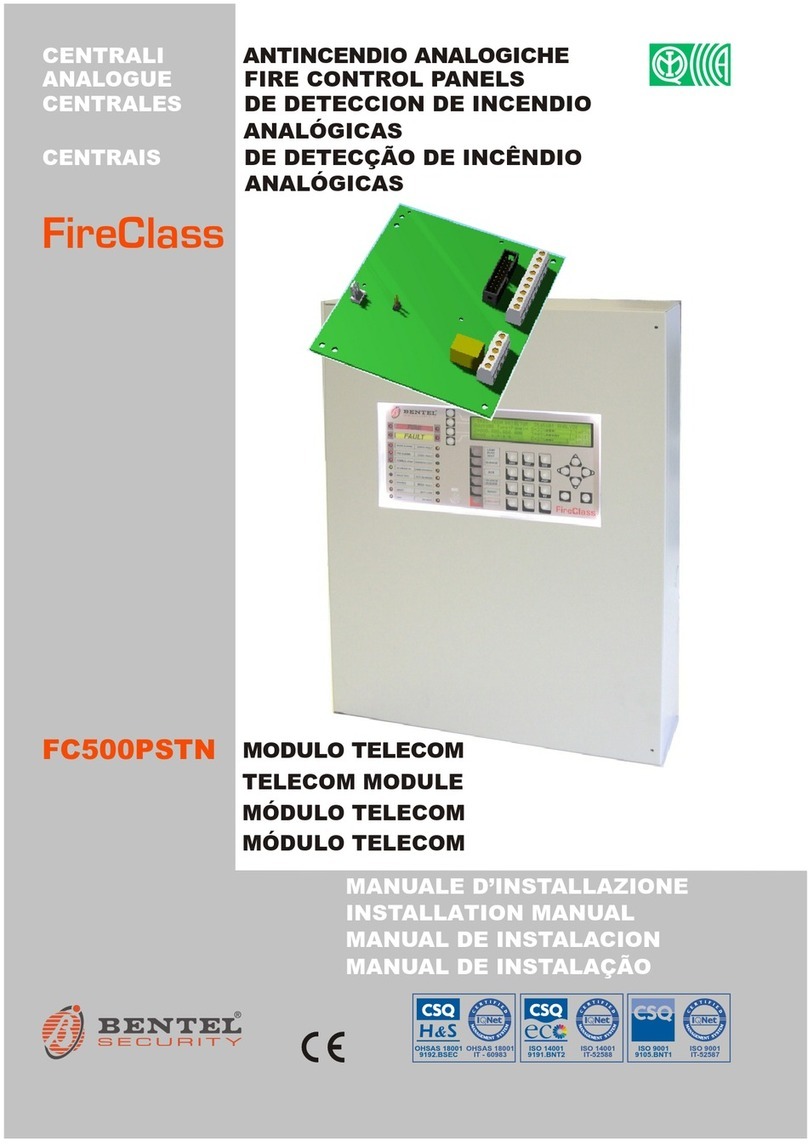
Bentel Security
Bentel Security FireClass FC500PSTN installation manual
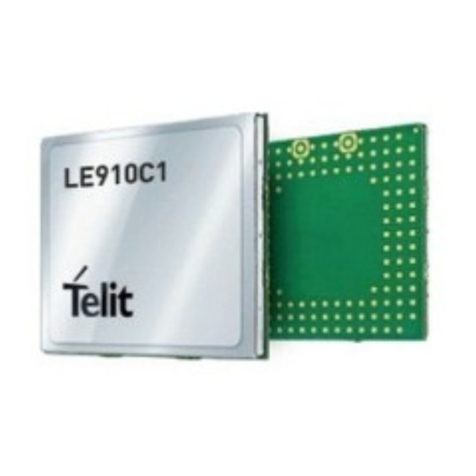
Telit Wireless Solutions
Telit Wireless Solutions LE910C1-NA Hardware user's guide
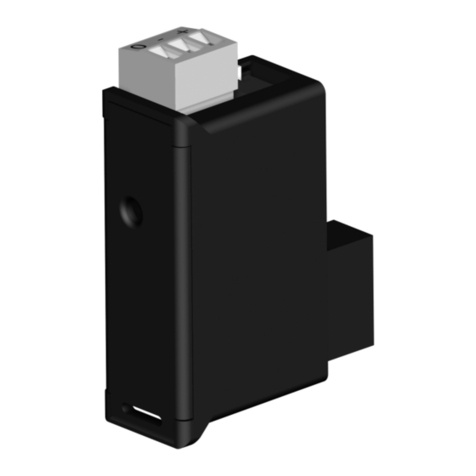
LEGRAND
LEGRAND EMDX3 MI manual

Exodraft
Exodraft EFC16 instructions

Anybus
Anybus CompactCom 40 Modbus-TCP Network guide
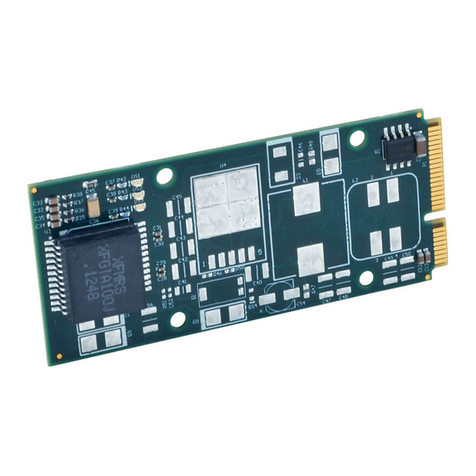
Acromag
Acromag AcroPack AP580E user manual

